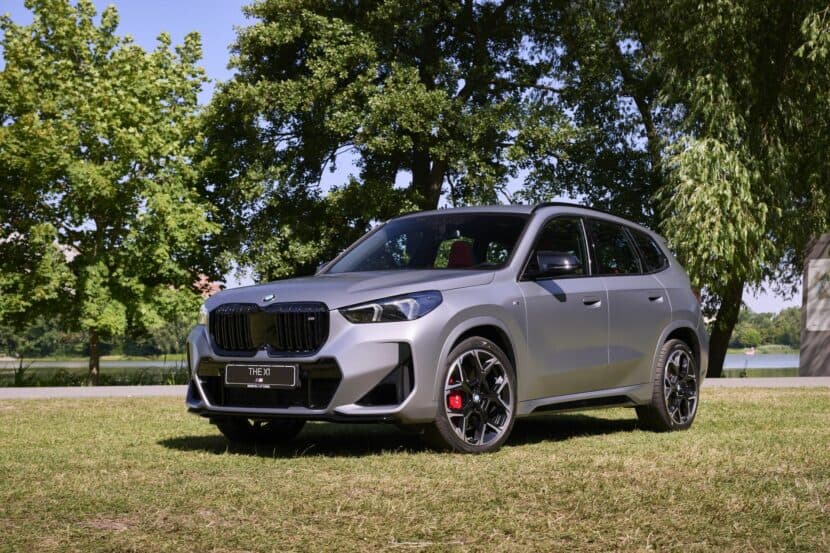When it comes to buying a car, many consumers often focus on the big-ticket features: horsepower, fuel economy, safety ratings, infotainment systems, and sometimes styling. While these factors are crucial, there’s a more subtle, yet equally important aspect of a vehicle’s practicality that often goes overlooked: the design and functionality of its seats, especially the rear seats.
More specifically, how those seats fold, and whether they provide a flat, even surface when folded down. It’s an issue that significantly impacts the versatility and utility of a vehicle but seldom gets discussed in reviews or sales pitches.
Why does this matter so much? Modern vehicles, particularly SUVs, crossovers, and hatchbacks, are marketed as multi-purpose machines. They are no longer just transport pods but lifestyle vehicles.
People expect them to be capable of hauling groceries one day, carrying furniture the next, and perhaps even acting as a makeshift sleeping area during a road trip. In this context, the ability to fold rear seats flat—or at least level—becomes a defining characteristic of a vehicle’s usefulness.
Yet, despite these practical expectations, many vehicles still struggle with poorly designed rear seat folding mechanisms. Some seats refuse to fold fully flat, resulting in awkward inclines or uneven cargo floors.
Others fold unevenly, leaving one side lower than the other, creating a lopsided surface that complicates loading and compromises space efficiency. These issues may seem trivial at first glance, but for those who regularly use their vehicles for work, travel, or outdoor activities, the consequences can be quite frustrating.
The reasons behind these seat design shortcomings vary widely. In some cases, vehicle manufacturers prioritize styling or seat comfort over cargo versatility. The thickness of seat cushions, the placement of structural reinforcements, and even the routing of safety hardware like airbags or seatbelt anchors can affect how well a seat folds. In others, mechanical complexity or cost-saving measures lead to simpler, but less effective, folding designs. Even platform architecture and drivetrain layouts can constrain interior packaging, forcing compromises on seat functionality.
On the flip side, some vehicles have managed to nail this balance beautifully, offering rear seats that fold completely flat, creating smooth, continuous cargo floors.
These vehicles become far more flexible in real-world usage, capable of handling everything from bulky furniture to sports equipment with ease. They also provide more comfortable sleeping spaces for spontaneous trips or emergencies. In essence, these “well-behaved” seats elevate the vehicle’s overall value proposition, often punching above their class or price point.
This article aims to explore both sides of this design spectrum. We will begin by examining five cars whose rear seats simply don’t fold flat, highlighting the challenges and the reasons behind this flaw. Following that, we’ll delve into five vehicles with seats that fold unevenly, creating lopsided cargo areas that hinder usability and frustrate owners.
Whether you’re in the market for a new car, an SUV for family adventures, or a practical crossover for city life, understanding these seat design details can save you from future headaches. It can also help you make smarter choices about how you use your vehicle’s interior space. After all, a car that looks great but can’t easily adapt to your lifestyle needs is a car that will disappoint sooner or later.
So buckle up and prepare to discover which vehicles make the cut as truly versatile movers, and which ones fall short due to seat designs that either don’t fold flat or fold in frustratingly uneven ways. This deep dive into a surprisingly overlooked aspect of automotive design will arm you with insights that few buyers consider—but all should.
Also Read: 5 Engines That Never Burn Coolant and 5 That Always Need Top-Ups
5 Cars With Seats That Don’t Flatten
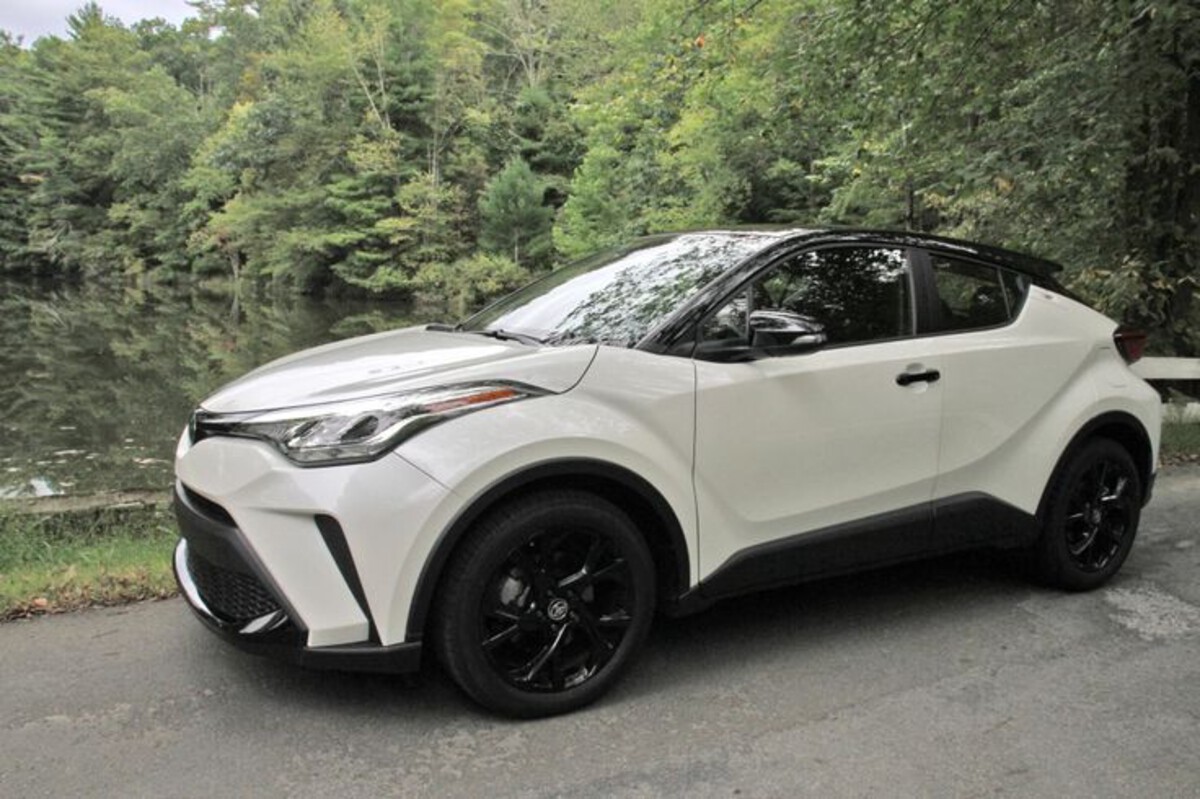
1. Toyota C-HR
The Toyota C-HR has always stood out in the compact SUV segment due to its edgy, coupe-inspired design and youthful appeal. It’s a car designed with aesthetics in mind, meant to lure in younger drivers who want something that looks different from the standard crossover crowd.
However, once you get past the flashy design and focus on day-to-day usability, one of its most glaring issues becomes immediately obvious: the rear seats don’t fold flat.
At first glance, this may not seem like a significant concern. After all, many buyers in this segment might not even plan on using the vehicle to haul large cargo. But that’s part of the problem—there’s an expectation in SUVs, even compact ones, that they’ll serve a dual role: carrying people comfortably and transforming into haulers when necessary.
The C-HR only fulfills half of that promise. The seatbacks, when folded, sit at a noticeable angle, creating a slope that is far from ideal for transporting large, flat items. This isn’t just a matter of inconvenience—it limits what kind of gear you can fit inside without awkward stacking.
Dig deeper into the reason behind this design, and it becomes evident that it stems from the seat base construction and the high rear floor, which is influenced by structural reinforcements and packaging for suspension components. Because the seat cushions don’t flip forward to accommodate the seatbacks, the rear seats simply land on top of them, creating a wedge shape that’s nearly useless for long, flat cargo.
Owners who’ve tried to camp in the back, or even just slide in a set of skis or a long box, often end up frustrated. The cargo isn’t stable, things slide around, and it generally feels like a waste of interior space. Some owners resort to building makeshift platforms to create a flat surface, but this shouldn’t be necessary in a modern crossover.
The C-HR’s seat design, while perhaps not a critical flaw, is emblematic of how Toyota prioritized form over function here. For the utilitarian-minded driver, that’s a letdown.
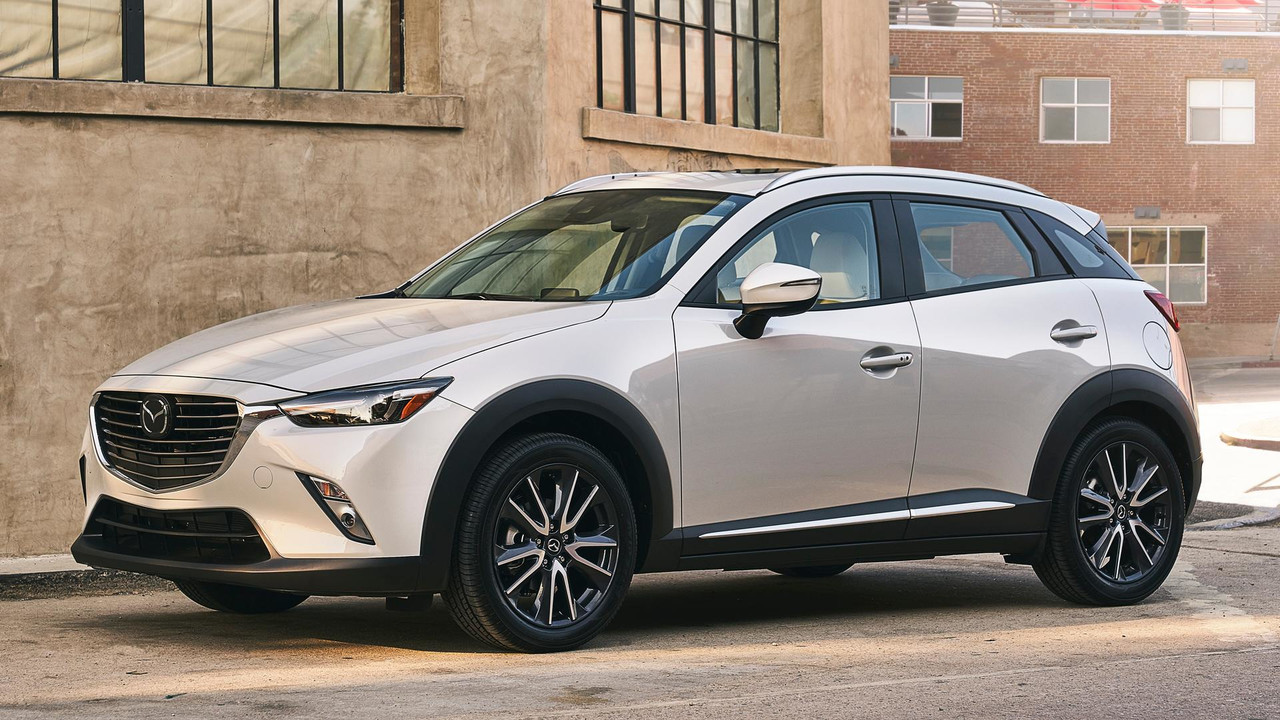
2. Mazda CX-3
The Mazda CX-3 has long held a reputation for driving like a car that costs more than it does. It’s agile, stylish, and features one of the most premium-feeling interiors in the subcompact class.
However, that upscale experience doesn’t extend to all aspects of its design, especially when it comes to cargo versatility. One of the most notable shortcomings of the CX-3 is the rear seats’ inability to fold completely flat, a flaw that hampers its usability.
This issue becomes particularly glaring when you consider how small the vehicle already is. With limited cargo space to begin with, every bit of room matters—and when the rear seats fold at a sharp incline, a significant portion of that potential space becomes functionally unusable.
For anyone who relies on their vehicle to carry more than just passengers, whether it’s sports equipment, musical instruments, or luggage, the angled rear seats make loading and organizing cargo more complicated than it should be.
The design flaw is due to a combination of factors, including the seatback thickness and the shape of the seat cushions, which don’t allow the backs to nestle into a flat position.
There’s also no mechanism to flip the bottom cushions out of the way—a feature present in other Mazda vehicles like the Mazda3 hatchback. The result is a two-tiered cargo area, with a steep incline that’s awkward for loading heavier items or sliding objects in and out.
Interestingly, the CX-3’s competitors, including the Honda HR-V and Hyundai Kona, offer more thoughtful seat-folding designs, which underscores Mazda’s missed opportunity.
The CX-3 was built to deliver an emotional, driver-centric experience, and it succeeds there. But in focusing so heavily on sporty handling and luxurious finishes, Mazda overlooked a crucial utility feature. The seats may look good and feel comfortable when upright, but their poor folding functionality betrays the crossover’s promise of practicality.
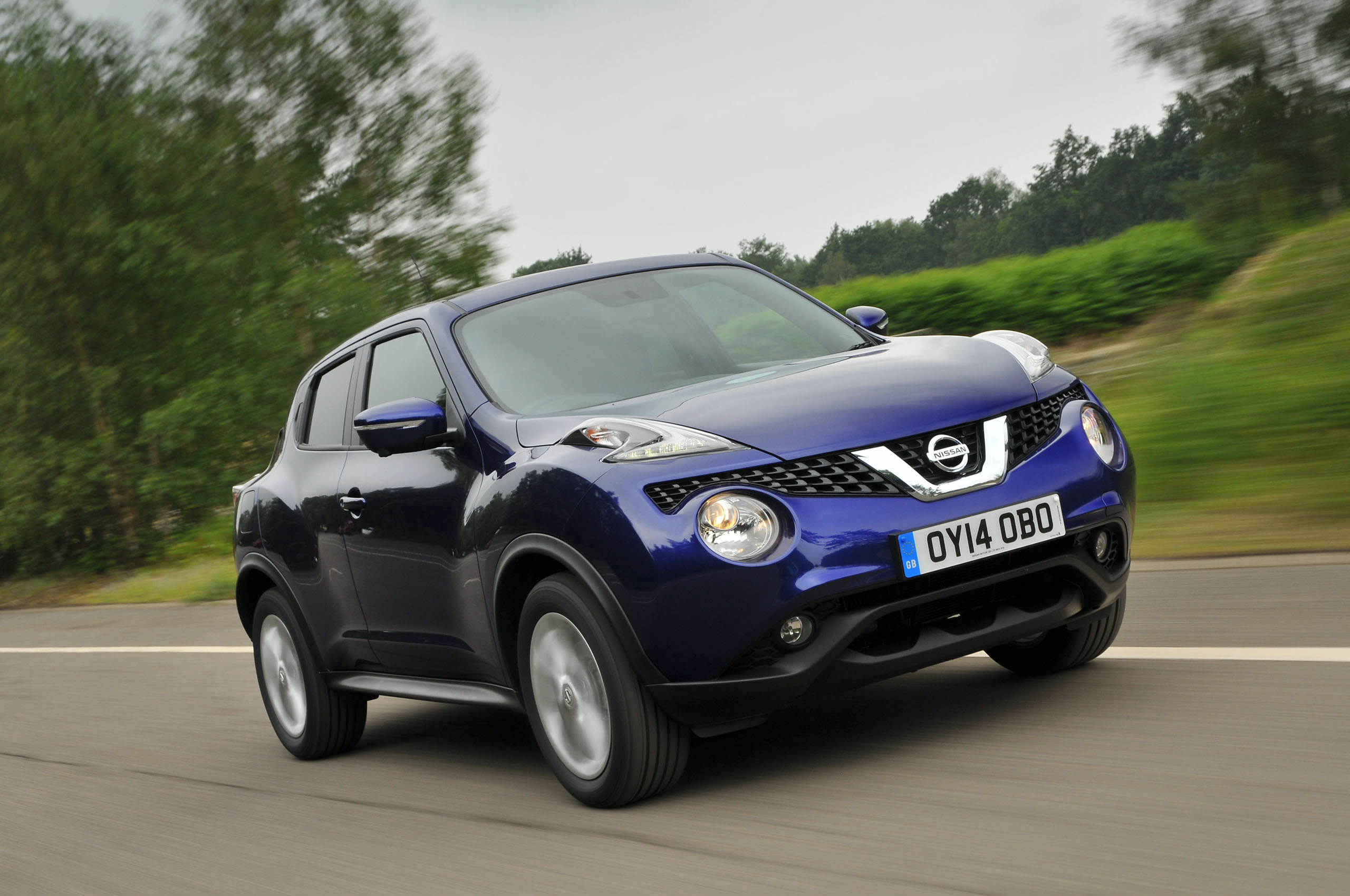
3. Nissan Juke
The Nissan Juke is one of those rare vehicles that has become something of a design icon in its own right. With its unique bug-eyed headlights and bold color schemes, it confidently announced to the world that it was not just another crossover. Unfortunately, that flair didn’t translate into thoughtful cargo-space design. One of the Juke’s most criticized aspects is the way its rear seats fold—and more specifically, how they don’t.
The Juke’s rear seats fold forward, but the process is clunky, and the result is far from flat. The high floor, caused by an elevated cargo platform and underfloor hardware, meets seatbacks that angle downward into the cabin space, creating a cargo surface that slopes sharply toward the front seats. It’s not just an aesthetic issue either; the incline makes it difficult to use the space for any serious hauling.
A key contributor to this issue is the way Nissan designed the second row’s seat structure. The base cushions are not removable or even movable, which forces the seatbacks to fold onto a surface that won’t give.
This means they land at an angle that you can’t change. Worse yet, the seatbacks themselves are thick and padded, leaving a noticeable height difference between them and the flat cargo floor behind them. It’s a structural mismatch that robs you of flexibility.
For many buyers, the Juke’s appeal lies in its city-ready footprint and stylish look. However, for urbanites who live in tight spaces and rely on their vehicles to multitask—grocery hauler by day, gear-lugger on weekends—the lack of a flat rear cargo area feels like a major oversight.
Even small cargo, like boxes and bags tend to tip and shift when placed on an uneven floor. For dog owners or those who might sleep in their car occasionally, the Juke is an exercise in frustration.
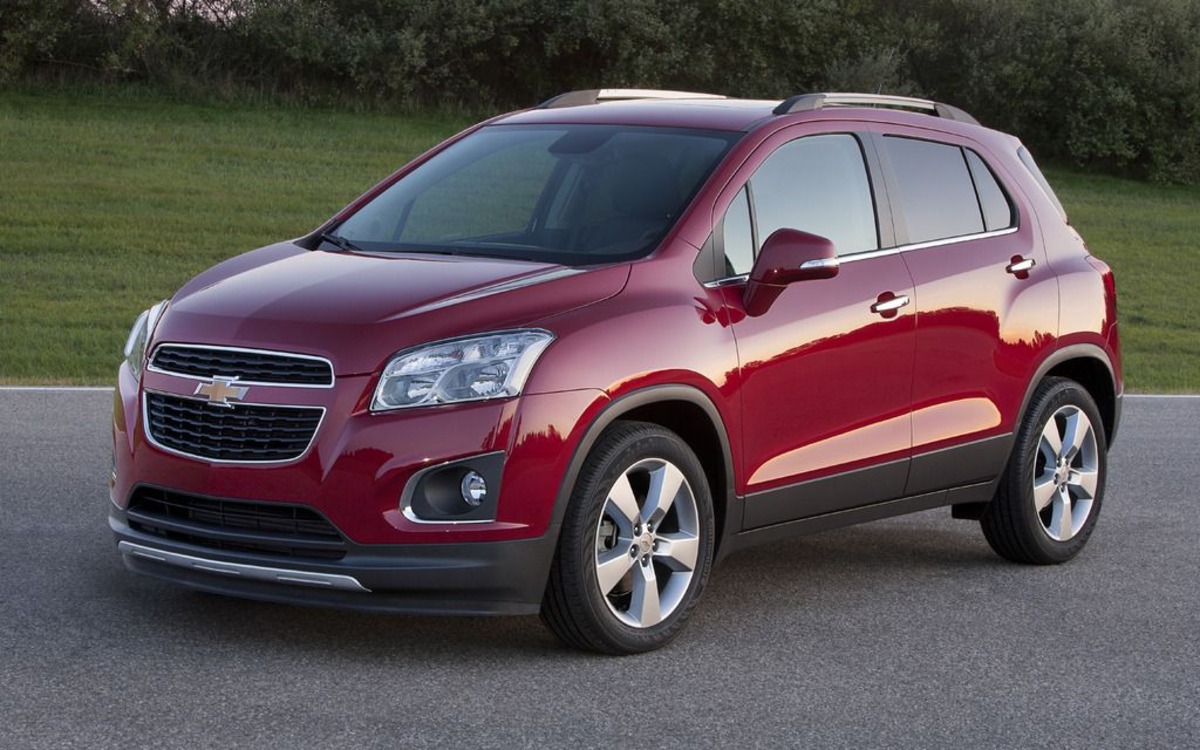
4. Chevrolet Trax
Chevrolet designed the Trax to be a gateway SUV—affordable, accessible, and sized for the city. For the most part, it checks those boxes. But dig deeper into its interior layout, and you’ll find a surprising letdown: the rear seats, despite appearing to fold, never quite lie flat. And in a vehicle with modest dimensions to begin with, that has a disproportionately negative impact on usability.
The folding mechanism in the Trax is where things go wrong. Like many subcompacts, the rear seatbacks drop down over static cushions that don’t budge. The cushions themselves are relatively thick, designed for comfort rather than practicality, and they sit high. This creates a sloped cargo floor that angles up toward the front seats, making the back area awkward to use for anything other than small, soft items.
Adding insult to injury, the front passenger seat in some models does fold flat, teasing you with the idea of a completely level surface. But that benefit is muted by the rear seat incline. Try sliding in a long object, like a bookshelf or kayak, and you’ll quickly find the inconsistency problematic. The item either tilts up and strains the rear hatch or sits precariously on the uneven surface.
This kind of problem is particularly glaring in a car that sells itself on affordability and everyday usefulness. The Trax may get you from A to B with minimal fuss, but for those hoping to use it for weekend projects or travel, the seat design becomes a noticeable and recurring hassle. It turns what could’ve been a surprisingly versatile little SUV into one that feels incomplete.

5. Jeep Renegade
Few vehicles carry the rugged, go-anywhere image that Jeep does, and the Renegade is supposed to be its city-friendly, trail-capable ambassador. But while it looks the part and performs well off-road in Trailhawk trims, its interior design leaves something to be desired, especially when it comes to how the seats fold. Simply put: they don’t go flat.
This problem is especially egregious because the Renegade is marketed toward adventurous types who need a versatile vehicle. Whether you’re sleeping in your car during a road trip, packing camping equipment, or hauling supplies for a weekend cabin, the ability to fold the seats flat is a basic expectation. In the Renegade, folding the rear seats results in an uneven cargo surface, with a pronounced step between the back of the seats and the trunk floor.
The reasons for this are multifold. First, the cargo floor sits relatively high due to the inclusion of a full-sized spare tire and underfloor compartments. Second, the rear seatbacks are bulky and don’t nest properly when folded.
And third, there’s no tucking mechanism for the seat cushions, which remain fixed in place and elevate the backs at a steep angle. The result is a jagged, irregular cargo surface that doesn’t match the brand’s promise of functional utility.
Owners have often noted the irony: a vehicle that can climb a mountain but struggles to accommodate a flat-pack desk. It’s a design that’s completely at odds with Jeep’s ethos, especially since other models like the Grand Cherokee or even the Compass do a better job at folding flat. While the Renegade might win fans with its personality and off-road cred, its interior design keeps it from being a true all-rounder.
5 Cars With Seats That Go Lopsided
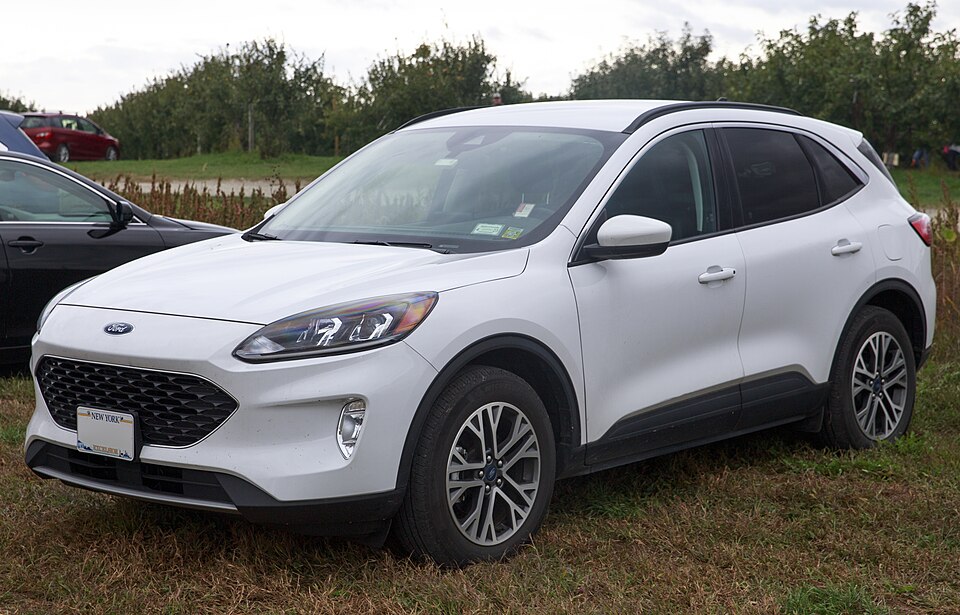
1. Ford Escape (Pre-2020 Models)
The Ford Escape, especially in its pre-2020 iterations, built its reputation as a capable and family-friendly compact SUV. While it boasted strong powertrain options, responsive steering, and generous cargo room, it had one peculiar flaw—its rear seats, when folded, often resulted in a visibly uneven, lopsided configuration.
This was especially true in models with a 60/40 split-fold design, where the difference between the two sides could be felt and seen.
In most configurations, the larger portion of the 60/40 split housed more internal hardware, such as seatback reinforcements, child seat latch anchors, or integrated armrests. This side tended to sit slightly higher when folded. Meanwhile, the smaller side folded flatter and more cleanly into the cargo floor.
This created a jagged cargo surface with a noticeable slope from one side to the other. While it didn’t render the space unusable, it introduced a logistical inconvenience that clashed with the Escape’s otherwise family-oriented image.
One of the most annoying consequences of this lopsided design came when loading long or flat objects, like planks, artwork, or even a rolled-up rug.
These items would rest unevenly, making it harder to secure them properly. Worse, if you attempted to sleep in the back during a camping trip or roadside rest, the angle could force your body to shift sideways unless you rigged something to even out the surface.
The Escape’s inconsistency wasn’t always highlighted in dealer brochures or advertisements, which is why many owners only discovered the issue after regular use.
This detail often went unnoticed during test drives, where focus tends to be on engine feel, tech features, and ride comfort. It’s a subtle design imperfection, but one that became significant over time for drivers who expected their SUV to be as practical as it was powerful.
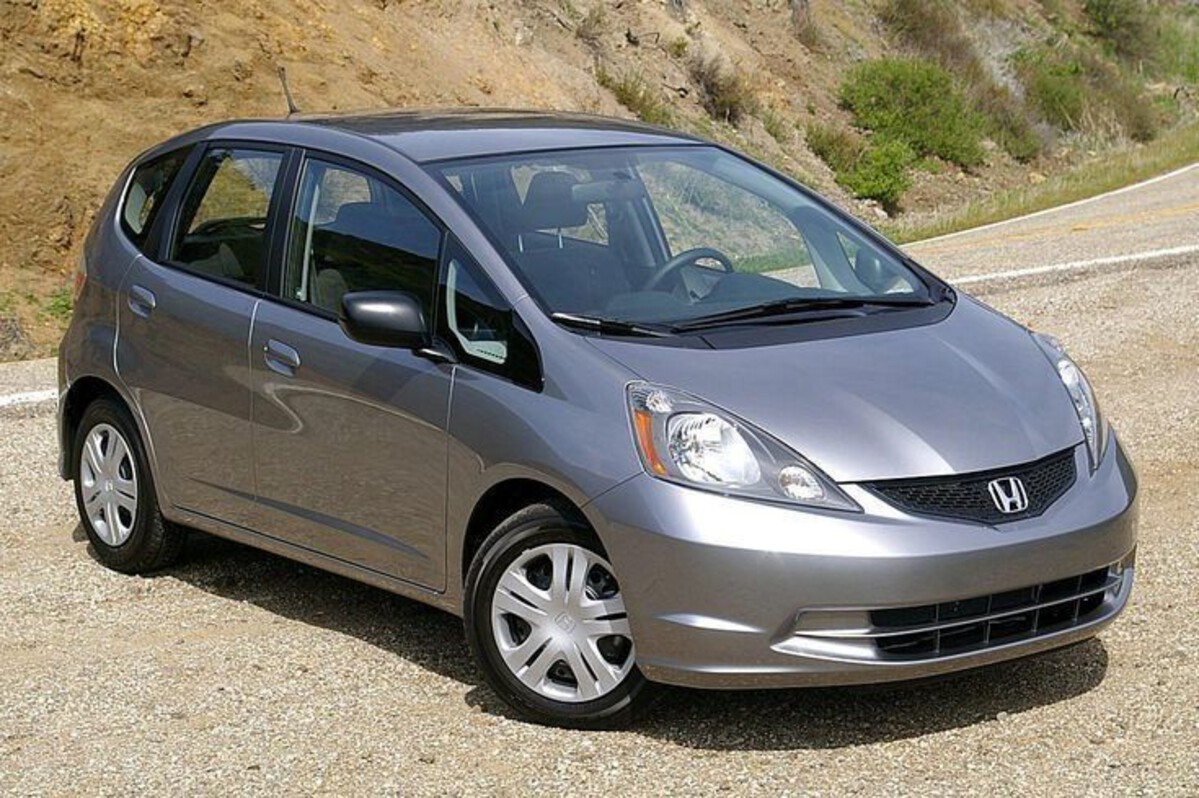
2. Honda Fit (Second Generation)
The Honda Fit has been widely praised for its innovative interior, especially the “Magic Seat” system. This system allowed the second-row seats to be configured in multiple ways—utility mode, tall mode, long mode—each enabling different cargo scenarios.
But despite this flexibility, the second-generation Honda Fit (2009–2014) occasionally suffered from an unexpected issue: when folded in certain configurations, the rear seats ended up lopsided, creating uneven cargo surfaces.
This issue stemmed not from poor engineering but rather from the complexity of its seat design. The Fit’s fuel tank is located under the front seats rather than the rear—an unconventional design choice that maximized cargo depth but constrained seat folding geometry.
As a result, when trying to fold both sections of the 60/40 rear bench, users often found that one side rested slightly higher or lower than the other. The difference wasn’t dramatic, but for certain use cases—such as transporting fragile or flat-packed cargo—it became noticeable.
Adding to the irregularity was the sensitivity of the folding mechanism to front seat position. If the front seats weren’t moved far enough forward, one side of the rear bench couldn’t fold fully, resulting in an even more obvious imbalance. This added step—adjusting the front seats before folding the rear—was unintuitive and inconsistent, especially when in a hurry or dealing with larger items.
The issue also affected those who used the Fit as a sleeping pod or travel vehicle. Many owners loved using it as a makeshift camper due to its space efficiency, but the uneven surface made sleeping in the back awkward without additional padding or leveling tools.
Still, the Fit’s lopsided folding quirk didn’t significantly harm its reputation. Most owners appreciated the sheer number of layout options, even if they came with a few irregularities. It remains a shining example of space efficiency, albeit with minor trade-offs.

3. Subaru Outback (Certain Trims)
Subaru’s Outback is practically a legend in the world of crossovers and wagons. Its rugged build, symmetrical all-wheel drive, and outdoorsy reputation have made it a favorite among hikers, dog owners, and road-trippers.
However, in certain trims—particularly those with additional rear seat features like heaters, electric recline, or side airbags—the folding seats end up creating a surprisingly lopsided cargo area.
The problem primarily arises in Outback models from around 2015 to 2019, where the rear seats offered power-assisted recline or more robust internal structures for safety and comfort. These upgrades added bulk and rigidity to one section of the 60/40 split rear bench, which, in turn, interfered with the seat’s ability to fold to the same degree as the other side.
While both seatbacks technically folded down, one rested at a slightly steeper angle, creating an incline that wasn’t always visible until something was placed on top.
For casual use, this may not sound problematic. But when you’re sliding in long objects—like skis, tools, or even planks of wood—the uneven support means your cargo doesn’t rest flat and is more prone to tipping or shifting during transit.
Dog owners also noticed that crates or dog beds didn’t sit squarely, often causing the animals to slide during braking or turns. What should have been a flat load floor becomes a miniature terrain map—something particularly ironic for a vehicle marketed toward outdoor enthusiasts.
Even more frustrating was the fact that the asymmetry could vary between trims. In some, the issue was minimal; in others, the lopsided effect was substantial enough to prompt DIY solutions. Some owners constructed their own leveling boards or platforms out of plywood or foam mats to correct the incline, essentially creating a false floor to regain the utility Subaru was known for.
To Subaru’s credit, later models—including the 2020 redesign—resolved many of these issues. A more uniform seat design, improved lever action, and flatter alignment helped restore the Outback’s practical image. Still, for owners of those mid-generation models, the quirky, slanted seatbacks remain a long-standing point of annoyance.
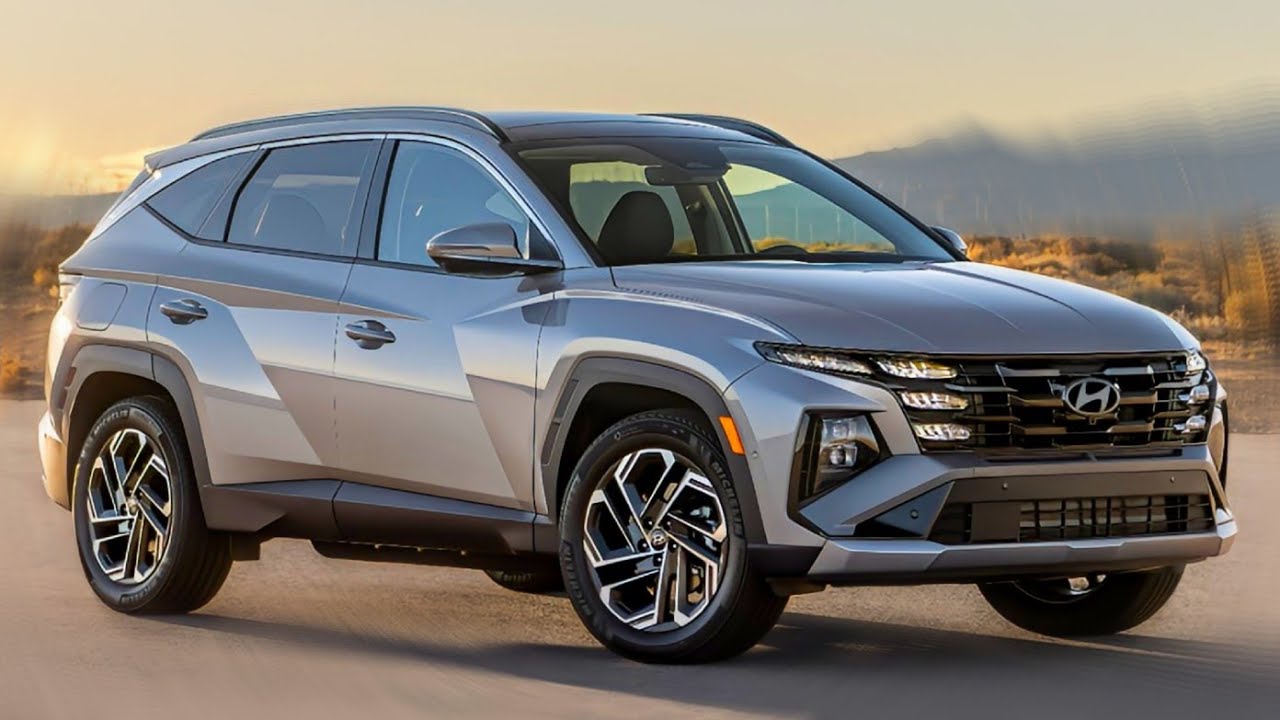
4. Hyundai Tucson (First and Second Generations)
Before its recent design transformation, the Hyundai Tucson had a reputation as a value-packed, no-nonsense compact SUV. But early models—particularly from the first and second generations (2005–2015)—had rear seats that folded in ways that often left the cargo floor uneven, sloped, or visibly lopsided. This issue was especially prominent when only one side of the 60/40 split was used.
One reason for this inconsistency was the internal reinforcement structure found in one portion of the seat. Depending on the trim level, one side of the rear bench was designed with extra bolstering or safety features that didn’t allow the backrest to recline or fold as flat as its opposite.
Combine that with a seat base that didn’t flip forward, and you had an uneven surface that could be both felt and seen. Worse, the slope created by the misaligned seats often disrupted how cargo slid or settled in the trunk.
Another factor was the quality of the seat hinges and the overall materials used. Over time, one side might begin to sag more than the other, or the latching mechanism might weaken slightly, exacerbating the unevenness. While this wasn’t a major mechanical flaw, it added to the impression that the interior wasn’t designed with precision. Even new, the seats felt like a workaround rather than a polished solution.
For practical users—like tradespeople, delivery drivers, or anyone relying on the Tucson for gear hauling—this created a friction point in an otherwise serviceable SUV.
Large containers wouldn’t sit evenly, and softer items like duffel bags or dog crates tended to tilt toward the lower side. Not only did this make loading awkward, but it often required additional tools like bungee cords, cargo nets, or foam blocks just to make the space functional.
Hyundai eventually addressed this in newer generations of the Tucson, beginning with the 2016 refresh and particularly in the post-2021 redesign. These newer models included flip-up seat cushions and more uniform rear seatbacks, creating a cleaner, flatter surface when folded. But for those who still drive or buy older Tucsons, the lopsided rear seats are a quirk worth preparing for.
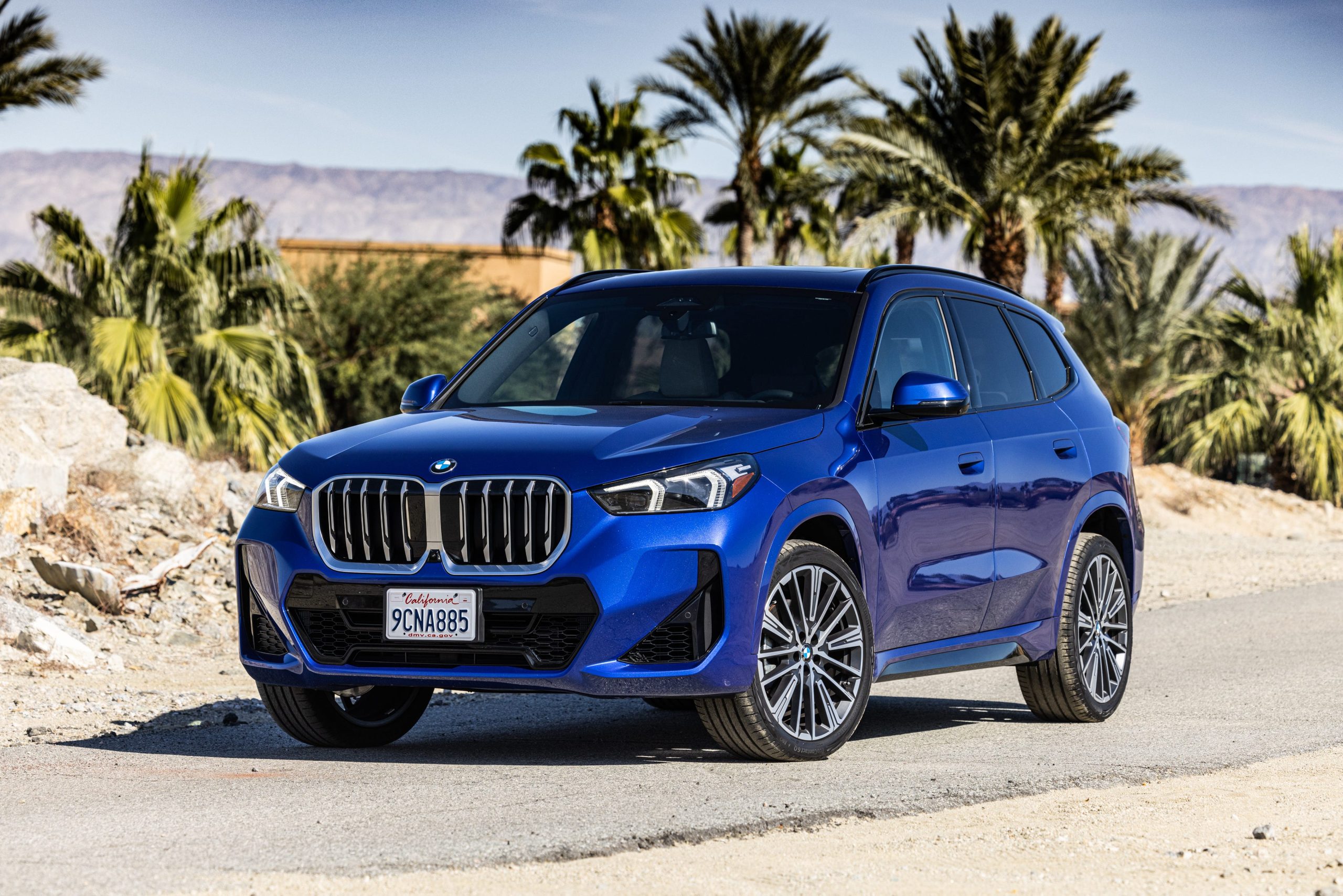
5. BMW X1 (First Generation)
BMW’s first-generation X1 (2009–2015) aimed to blend the best of both worlds: the luxury and driving dynamics of a BMW sedan with the utility of a crossover.
And while it delivered on performance and interior quality, it stumbled in one subtle yet frustrating way—its rear seatbacks, when folded, often ended up at different angles, creating an uneven, lopsided cargo space that felt out of place in a premium vehicle.
The issue largely stemmed from the rear-wheel-drive layout, which dictated much of the underfloor architecture. The drivetrain components took up valuable space beneath the floor, raising the cargo platform slightly and affecting how the seats folded down.
The seats had to be engineered around these constraints, leading to compromises in their folding mechanics. One side—usually the side with the seatbelt anchor and headrest—would sit higher than the other when down.
BMW also offered a 40/20/40 split-folding seat in some trims, which made matters worse. Each section had its own folding hinge and geometry, and these didn’t always align perfectly with each other. This became especially problematic when all three sections were folded simultaneously.
The result was a bumpy, uneven surface that contradicted the idea of “precision engineering.” It felt more like a jigsaw puzzle than a smooth load space.
This lopsidedness made it difficult to stack or organize cargo. Fragile items would shift to one side. Larger items often had to be loaded diagonally.
Even sleeping in the back—a rare but not unheard-of activity for road trippers—became uncomfortable unless extra padding or leveling tools were used. For a brand that markets itself on driving perfection, this level of interior asymmetry felt like an unexpected oversight.
The second-generation X1 addressed many of these problems with a switch to a front-wheel-drive-based platform (UKL architecture), which allowed for more space-efficient interior packaging. But the first-gen models remain popular on the used market, and for owners who value practicality as much as badge prestige, the lopsided seatbacks can be a continual source of disappointment.
Also Read: 5 Cars With Transmissions That Never Slip and 5 That Always Jerk
When it comes to practical vehicle ownership, the devil truly is in the details. Few features embody this better than the design of the rear seats and how they fold down to expand cargo space. As we’ve explored throughout this article, the seemingly simple task of folding rear seats flat and level can vary widely in execution from model to model, with major implications for usability.
On one end of the spectrum are vehicles whose seats don’t fold flat at all, creating sloped or stepped cargo floors that limit the kinds of items you can transport easily.
Whether it’s the Toyota C-HR’s wedge-shaped rear space, the Mazda CX-3’s two-tiered layout, or the Jeep Renegade’s uneven bed-like surface, these design flaws reduce what should be a straightforward interior feature into a persistent inconvenience.
The frustrating reality is that these issues often appear in vehicles that otherwise excel in design, performance, or style, reminding us that good looks and power alone don’t always guarantee practical versatility.
On the other end are cars with rear seats that do fold, but in ways that produce a lopsided cargo area. The Ford Escape’s pre-2020 split seats, the Honda Fit’s clever but sometimes uneven Magic Seat, and the BMW X1’s drivetrain-driven limitations show that even luxury and innovation can’t fully solve interior packaging challenges.
Lopsided floors make loading awkward, cause cargo to shift or tip, and even complicate sleeping arrangements inside the vehicle. They introduce a subtle yet persistent inconvenience that chips away at the overall ownership experience.
What these examples collectively demonstrate is that seat folding isn’t merely a checkbox on a spec sheet—it’s a reflection of thoughtful interior engineering and attention to detail.
Vehicles with well-designed, flat-folding seats enhance everyday usability, giving owners the freedom to carry a wide variety of cargo types easily. Conversely, cars with poorly designed folding seats reveal the compromises and constraints manufacturers face, whether due to architecture, cost, or competing priorities.
For buyers, the takeaway is clear: paying close attention to seat folding functionality during test drives and research can prevent future frustration.
It’s worthwhile to physically test how rear seats fold, how flat they lie, and whether the cargo floor is continuous or jagged. Remember, a car that fits your lifestyle isn’t just about how it looks or drives—it’s also about how well it adapts to your needs day in and day out.
Looking forward, manufacturers seem increasingly aware of these challenges. Newer models across many segments have improved seat folding designs, incorporating flip-up cushions, adjustable floor panels, and more uniform folding mechanisms that create flat, level cargo areas. Innovations like sliding and reclining rear seats with fold-flat options are becoming more common, indicating that interior practicality is climbing higher on the priority list.
Ultimately, whether you’re a weekend warrior hauling bikes and camping gear, a parent juggling groceries and sports equipment, or a city dweller needing to occasionally transport large boxes, the design of rear seats can profoundly impact how you live with your vehicle. The difference between a flat and a lopsided or sloped cargo floor can transform your experience from frustrating to seamless.
As you shop around or even plan your next vehicle upgrade, keep in mind the lessons highlighted here. Don’t overlook the importance of the rear seat folding design. By choosing a vehicle with well-executed rear seats, you’re investing in flexibility, convenience, and peace of mind that will serve you long after the initial thrill of the test drive fades.
In the end, the best vehicle is not just one that looks good on paper or under the hood, but one that works smoothly and thoughtfully in your daily life. And in the realm of interior design, well-behaved rear seats—whether flat or evenly folded—are a cornerstone of that functionality.

